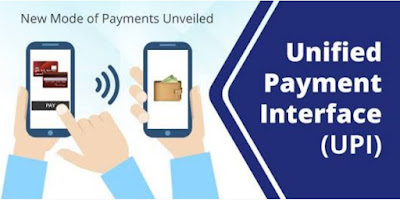▶️ The main objective of this organisation is to consolidate and integrate the multiple systems with varying service levels and standard business processes for all physical as well as electronic payment and settlement systems.
▶️ It also aims to facilitate an affordable payment mechanism to benefit the common men of the country and to help in financial inclusion.
Highlights of National Payments Corporation of India
• National Payment Corporation of India (NPCI) was founded in December, 2008 and has been incorporated as a “Not for Profit” Company under the provisions of Section 8 of Companies Act 2013.
• NPCI received the Certificate for Commencement of Business in April 2009.
• It commenced its business with an authorised capital of Rs. 3 billion and paid up capital of Rs. 600 million.
• NPCI started its journey with 2 million transactions per day and has now grown multi fold to almost 20 million transactions per day.
NPCI initially offered a single service of switching interbank ATM transaction.
But today it covers the following services –
Cheque Clearing
Immediate Payments Service (24x7x365)
Automated Clearing House
Electronic Benefit Transfer
RuPay (Domestic Card Payment Network) and many more.
NPCI has its headquarters in Mumbai.
Currently, NPCI has 10 core promoter banks and these are –
1. State Bank of India
2. Punjab National Bank
3. Canara Bank
4. Bank of Baroda
5. Union Bank of India
6. Bank of India
7. ICICI Bank
8. HDFC Bank
9. Citibank
10. HSBC
NPCI Board consists of following –
1. Nominee from RBI
2. Nominees from ten core promoter banks
3. Two Independent Directors
At Present Managing Director and Chief Executive Officer of NPCI – Dilip Asbe and
Non-Executive Chairman of NPCI- Shri Biswasmohan Mahapatra
NPCI Brand Philosophy
The brand logo of NPCI depicts the pace at which, the organisation has been achieving new benchmarks.
M. Balachandran, the former Chairman of NPCI unveiled the logo of the company at the Board Meeting on 15th December 2015.
The colours that are present in the logo are Blue, Green and Saffron, represents the Indian flag’s colours and pay tribute to the organisation’s deep roots. These colours denotes the following meanings.
1.) Blue colour (primary corporate colour) represents depth and stability.
2.) Green represents balance, growth and harmony.
3.) Saffron represents warmth and happiness.
The open P and liberal spaces around N and C, in NPCI logo represent company’s belief in transparency and clear work ethics.
Products of NPCI
Let us have a look at various products of National Payments Corporation of India.
1) National Automated Clearing House (NACH) – National Automated Clearing House is a centralised clearing web based system that has been implemented by NPCI in order to facilitate interbank, high volume or bulk electronic transactions which are repetitive and periodic in nature.
This service aims to consolidate multiple ECS (Electronic Clearing Service) systems running across the country and provides a framework for the harmonization of standard and practices by removing local barriers.
NACH system can be used by banks, financial institutions, corporates and government for making bulk transactions towards distribution of subsidies, dividends, interest, salary, pension etc. and for bulk transactions towards collection of payments pertaining to telephone, electricity, water, loans, investment in mutual funds, insurance premium etc.
It also supports Financial Inclusion measures initiated by Government, government agencies and banks by providing support to Aadhar based transaction
2.) Immediate Payment Service (IMPS) – This service was launched by NPCI on 22nd November 2010 and now this service is available across the country.
IMPS is a robust and real time fund transfer which offers an instant 24×7, interbank electronic fund transfer service that could be accessed on multiple channels like mobile, internet, ATM, Branch and USSD (*99#)
It was built upon NFS network.
3) Unified Payment Interface (UPI) – This system was launched with 21 member banks on 11th April 2016 by NPCI and regulated by RBI.
Unified Payments Interface (UPI) is a system that powers multiple bank accounts into a single mobile application (of any participating bank) merging several banking features and merchant payment into one hood.
It also caters to ‘Peer to Peer‘ collect request which can be scheduled and paid as per requirement
Unique Features
(i) Best answer to cash on delivery hassle, running to an ATM or rendering exact amount.
(ii) Immediate money transfer through mobile device round the clock 24 × 7 and 365 days
(iii) Virtual Payment Address (a unique ID provided by the bank) facility refrain the customers from entering their details such as card number, account number, IFSC code etc.
(iv) Single mobile application for accessing different bank accounts and merchant payments.
4.) National Financial Switch (NFS)– NPCI runs NFS, which is the largest network of ATMs (automated teller machine) in India.
It was initially designed and developed in the year 2004 by IDRBT (Institute for development and Research in Banking Technology), in order to interconnect various ATMs across the country and hence make banking convenient.
NFS has introduced the sub- membership model small, regional banks including RRBs and local cooperative banks to participate in the ATM network
Some additional functions of NFS include Interoperable Cash Deposit (ICD), mobile banking registration (MBR), card to card fund transfer (C2C), cheque book request (CBR), statement request (SR) & Aadhar Card Seeding (ANS)
5.) BHIM App – Bhim app was launched on 30th December 2016 and has been developed by NPCI.
This app allows users to make simple quick and easy transactions. It uses UPI interface.
Salient features of BHIM app
• Send or Request money by entering virtual payment address (UPI ID), account number and QR scan.
• One can also transfer money using mobile number (mobile number should be registered with BHIM or *99# and account should be linked)
• Pay by scanning the QR code through through Scan & Pay or generate yours to let others make easy payment to you.
• Currently BHIM is available in 13 languages including Hindi, English, Tamil, Telugu, Malayalam, Bengali, Odia, Kannada, Punjabi, Assamese, Urdu, Marathi and Gujarati.
• A user can send upto ₹ 20,000 per transaction and a maximum of ₹ 40,000 per day for one bank account.
• Total number of transactions in a day is limited to 20
• There is no limit on the amount of money which can be received using BHIM app.
Points to Remember
Virtual Payment Address (VPA) is a unique identifier which you can use to send or receive money on UPI. Think of it as an email address, which you can use to transfer money.
UPI PIN is a 4 or 6 digit number that is set by the customer on BHIM after the registration process. UPI PIN is used for authenticating all the transactions done on UPI platform ( BHIM or *99# or UPI apps).
6.) Cheque Truncation System (CTS) – It was launched in 2010. Under the system, online image-based cheque clearing system is used and Magnetic Ink Character Recognition (MICR) data are captured at the collecting Bank branch and transmitted electronically.
It provides no geographical restrictions. It also reduces operational risk and risk related to paper clearing. There are no extra charges levied for collection of cheques drawn on a bank within the Grid.
7.) *99# : This system works on Unstructured Supplementary Service Data (USSD) channel. It was launched by NPCI in November 2012 and it was dedicated to the nation by our prime minister on 28 August 2014, as part of Pradhan Mantri Jan Dhan Yojana.
It is a common number across all telecom service providers (TSPs) in the country.
Key features
• *99# has been launched to take banking services to every common man across the country.
• Services offered under *99# include sending or receiving inter bank account to account funds, balance enquiry and setting or changing UPI PIN.
• *99# service is currently offered by 41 leading banks and all GSM service providers and can be accessed in 13 different languages including English and Hindi.
8.) RuPay card scheme – RuPay is an Indian domestic card network that has been launched by National Payments Corporation of India on 26th March 2012.
It offers a open loop multilateral system which will allow all Indian banks and Financial Institutionsin India to participate in electronic payment system.
RuPay now competes with Visa and MasterCard in terms of cost and quality of service. RuPay card can be used at ATMs and micro ATMs.
9.) Bharat Bill Payment System (BBPS) : Bharat bill payment system is a Reserve Bank of India (RBI) conceptualised system and driven by National Payments Corporation of India (NPCI).
This system will work as a tiered structure for operating the bill payment system across the country under a single brand image.
Salient features
• It is a one stop payment platform for all the bills and can be accessible “Anytime Anywhere”. It has multiple modes of payment and provides instant confirmation via SMS or receipt.
• Bharat bill payment system offers myraid bill collection categories like electricity,Telecom, DTH, gas, water bills etc. through a single window.
What is BBPCU and BBPOU?
Bharat Bill Payment Central unit (BBPCU) – NPCI has been authorised by RBI as Bharat bill payment Central unit and is responsible for setting business standards, rules and procedures for technical and business requirements of all participants.
Bharat Bill Payment Operating Unit (BBPOU) – Bharat bill Payment Operating unit is an entity that is authorised by RBI. It can be a bank or a non-Bank.
10) Aadhaar Enabled Payment System (AePS) : AePS is a Bank led model which allows online interoperable financial inclusion transaction at POS (Micro ATMs) through the business correspondent of any Bank using the Aadhaar authentication.
AePS allows you to do almost six types of transactions. The only inputs required by the customer to do a transaction under this scenario are –
• IIN (Identifying the bank to which customer is associated).
• Aadhaar number
• Fingerprint captured during their enrollment.
Objectives of AePS
✓ To empower the bank customer in using Aadhar as his or her identity and perform basic banking transactions like cash deposit, cash withdrawal, intra bank or interbank fund transfer, balance enquiry and optanium mini statement throw a business correspondent.
✓ To subserve the goal of Government of India and Reserve Bank of India, in furthering Financial Inclusion.
✓ To sub serve the goal of RBI in electronification of retail payments.
✓ To enable banks in routing the Aadhar initiated inter bank transaction through a central switching and clearing agency.
What is Bharat QR?
• A QR code consists of black squares arranged in a square grid on a white background, which can be read by imaging device such as camera. It contains the information about the item to which it is attached.
• NPCI joined hands with international card schemes, to develop a common standard QR code specification.
• BQR is a Person to Merchant (P2M) mobile payment solutions.
That’s all in this article. Feel free to comment any suggestion or feedback in the comment box below. Keep sharing and Happy Learning
Thank You!!

























